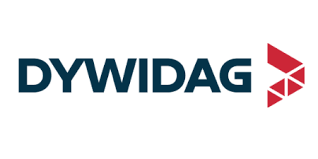Prefabricated Housing Market Report
Published Date: 15 December 2025 | Report Code: prefabricated-housing
Prefabricated Housing Market Size, Share, Industry Trends and Forecast to 2033
This report provides a comprehensive analysis of the Prefabricated Housing market from 2023 to 2033, encompassing market size, growth trends, key segments, regional insights, and significant market players.
| Metric | Value |
|---|---|
| Study Period | 2023 - 2033 |
| 2023 Market Size | $112.00 Billion |
| CAGR (2023-2033) | 5.6% |
| 2033 Market Size | $195.59 Billion |
| Top Companies | Katerra, Inc., Modular Home Builders Association, Palomar Modular Buildings, Skyline Champion Corporation |
| Last Modified Date | 15 December 2025 |
Prefabricated Housing Market Report (2023 - 2033)
Prefabricated Housing Market Overview
Customize Prefabricated Housing Market Report market research report
- ✔ Get in-depth analysis of Prefabricated Housing market size, growth, and forecasts.
- ✔ Understand Prefabricated Housing's regional dynamics and industry-specific trends.
- ✔ Identify potential applications, end-user demand, and growth segments in Prefabricated Housing
What is the Market Size & CAGR of Prefabricated Housing market in 2033?
Prefabricated Housing Industry Analysis
Prefabricated Housing Market Segmentation and Scope
Tell us your focus area and get a customized research report.
Prefabricated Housing Market Analysis Report by Region
Europe Prefabricated Housing Market Report:
In Europe, the market is expected to grow from $40.91 billion in 2023 to $71.45 billion by 2033. The region is characterized by stringent regulations related to sustainability, making prefabricated housing an increasingly attractive option for construction.Asia Pacific Prefabricated Housing Market Report:
In the Asia Pacific region, the Prefabricated Housing market size was approximately $20.54 billion in 2023, projected to grow to $35.87 billion by 2033. Rapid urbanization, industrialization, and increasing housing shortages contribute to this growth. Countries like China and Japan are leading in terms of prefabrication technology and implementation.North America Prefabricated Housing Market Report:
The North American market, valued at approximately $36.83 billion in 2023, is anticipated to grow significantly to $64.31 billion by 2033. The surge in interest from homeowners seeking customizable, sustainable housing options, along with advancements in building technology, are key drivers.South America Prefabricated Housing Market Report:
South America is witnessing a gradual increase in the adoption of prefabricated housing, with a market size of about $6.83 billion in 2023, expected to reach $11.93 billion by 2033. The economic challenges, coupled with the need for cost-effective housing solutions, drive the demand for prefabricated structures.Middle East & Africa Prefabricated Housing Market Report:
The Middle East and Africa region, with a market size of $6.89 billion in 2023, is projected to reach $12.03 billion by 2033. The need for rapid urban development and affordable housing solutions in countries undergoing significant infrastructure development is propelling this market forward.Tell us your focus area and get a customized research report.
Prefabricated Housing Market Analysis By Product Type
Global Prefabricated Housing Market, By Product Type Market Analysis (2023 - 2033)
In 2023, the modular homes segment commands a market size of $74.69 billion, expected to grow to $130.44 billion by 2033, showcasing the highest growth potential. Panelized homes and site-built modular homes follow, valued at $28.07 billion and $9.24 billion, respectively, in 2023. Each of these types has distinct advantages, with modular homes being favored for their adaptability and efficiency.
Prefabricated Housing Market Analysis By Application
Global Prefabricated Housing Market, By Application Market Analysis (2023 - 2033)
The residential application leads the market, valued at $74.69 billion in 2023 and expected to grow to $130.44 billion by 2033. Commercial and industrial applications, valued at $28.07 billion and $9.24 billion in 2023 respectively, indicate growing acceptance of prefabricated solutions in various sectors.
Prefabricated Housing Market Analysis By Material
Global Prefabricated Housing Market, By Material Market Analysis (2023 - 2033)
Wood remains the predominant material in the prefabricated housing market, holding a market size of $74.69 billion in 2023, set to reach $130.44 billion by 2033. Steel and concrete are also significant, projected to grow steadily as their benefits become more recognized, especially for durability and design flexibility.
Prefabricated Housing Market Analysis By End User
Global Prefabricated Housing Market, By End-User Market Analysis (2023 - 2033)
Individuals constitute the largest segment, with a market size of $74.69 billion and a share of 66.69% in 2023, highlighting the strong demand from consumers for prefabricated homes. Builders and developers follow, indicating a balanced involvement across various stakeholders.
Prefabricated Housing Market Analysis By Technological Advancements
Global Prefabricated Housing Market, By Technological Advancements Market Analysis (2023 - 2033)
Technological advancements in prefabricated housing, including automation and sustainability initiatives, marked a significant impact on the market dynamics. The automation segment is valued at $74.69 billion in 2023, while sustainability technologies, at $28.07 billion, reflect the growing emphasis on eco-friendly building practices.
Prefabricated Housing Market Trends and Future Forecast
Tell us your focus area and get a customized research report.
Global Market Leaders and Top Companies in Prefabricated Housing Industry
Katerra, Inc.:
Katerra is a technology-driven construction company providing prefabricated building solutions, simplifying the process through advanced technology and high efficiency in the construction process.Modular Home Builders Association:
This organization represents the modular home industry and promotes the growth and development of prefabricated housing, advocating for sustainable construction practices and innovative solutions.Palomar Modular Buildings:
Palomar specializes in modular construction, focusing on design flexibility and sustainable building practices, catering to various needs across residential and commercial sectors.Skyline Champion Corporation:
Skyline Champion Corporation is a significant player in the manufactured and modular homes market, known for its innovative designs and commitment to quality.We're grateful to work with incredible clients.









FAQs
What is the market size of prefabricated housing?
The global prefabricated housing market was valued at approximately $112 billion in 2023, with a projected CAGR of 5.6% between 2023 and 2033.
What are the key market players or companies in the prefabricated housing industry?
Key players in the prefabricated housing industry include major construction firms, manufacturers specializing in modular housing, and innovative startups focused on sustainable building solutions.
What are the primary factors driving the growth in the prefabricated housing industry?
Growth is driven by increasing demand for affordable housing, advancements in construction technology, sustainability focus, and faster build times that prefabricated homes offer compared to traditional housing methods.
Which region is the fastest Growing in the prefabricated housing market?
Europe is the fastest-growing region, expected to grow from $40.91 billion in 2023 to $71.45 billion by 2033, driven by strong demand for efficient housing solutions.
Does ConsaInsights provide customized market report data for the prefabricated housing industry?
Yes, ConsaInsights offers customized market report data, tailored to client specifications, covering various aspects of the prefabricated housing industry.
What deliverables can I expect from this prefabricated housing market research project?
Deliverables include comprehensive market analysis, segment insights, competitive landscape overview, growth forecasts, and actionable recommendations specific to the prefabricated housing sector.
What are the market trends of prefabricated housing?
Current trends include increased sustainability practices, innovative design approaches, automation in construction processes, and growing acceptance of prefabricated homes in traditional housing markets.
